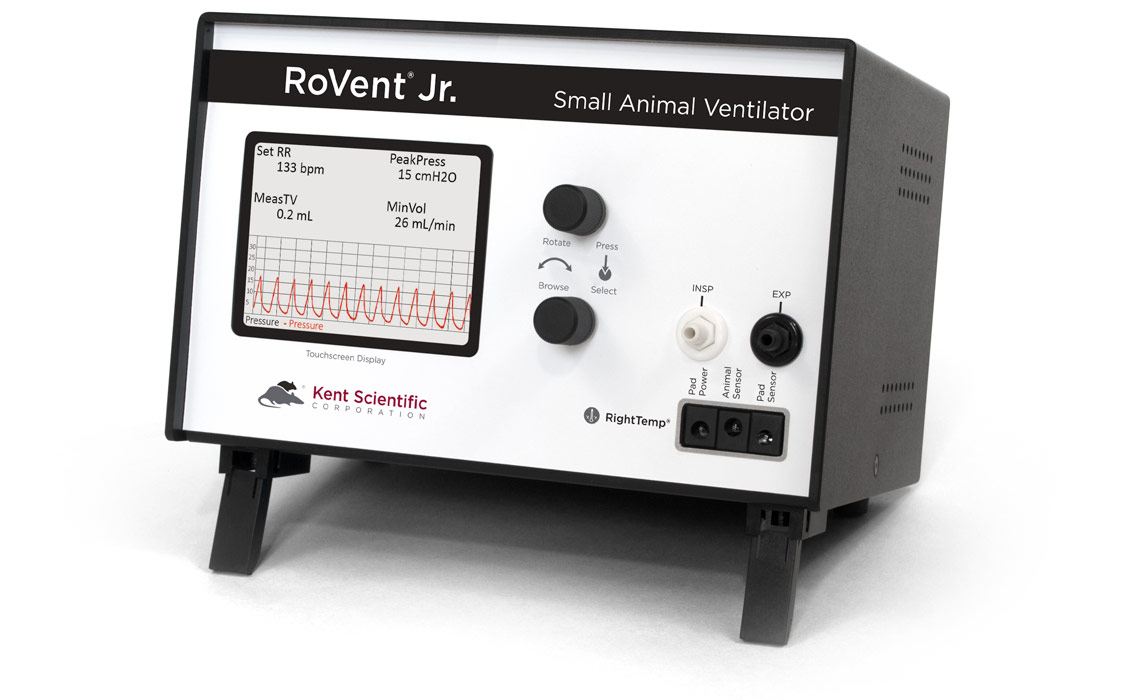RoVent® Jr.

Small Animal Ventilator
The RoVent Jr. Small Animal Ventilator is ideal for mice, rats and guinea pigs up to 1,250 grams. The ventilator is fully automatic, simply enter the animals weight and press run. You have the ability to control ventilation by either volume or pressure.
The RoVent Jr. provides a number of features that make it an ideal system for in-vivo COVID-19 research.The built-in touchscreen display provides information about your current ventilator settings. You have the ability to customize the display; many of the parameters can easily be displayed as numeric numbers or on a real-time graph. The real-time display screen has the capability to show numeric readings, waveforms, or both simultaneously. View historical data with a touch of the screen.
RoVent® Jr. Small Animal Ventilator RV-01
Features & Benefits
- Fully Automatic with Touchscreen Control Safely ventilate using auto-calculated settings based on animal weight
- Ventilate Animals from 3 to 1,250 g Ideal for mice, rats, and small animals
- Volume Control and Pressure Control Reduce footprint with one, dual control ventilator
- Multi-Animal Capability Greater efficiency
All Systems Include
- Integrated touchscreen display
- 1-Year 100% Parts & Labor Warranty
(Extended 2-Year Warranty Available) - FREE sample pack of endotracheal tubes with safety wedges
|
Automatic Ventilator Module
RoVent®
|
|---|
| Control Modes | Volume Controlled, Pressure Controlled |
| I:E Ratio | 1:1 to 1:5 |
| Sigh Pressure | 2 to 30 cmH20 |
| Respiratory Rate Range | 20 to 350 bpm |
| Max Inspiratory Flow | 1.5 SLPM |
| Weight Range | 3g to 1,250g |
| Multi-Animal Capability* | Yes |
| *Our clinical department will be pleased to review your study protocol to confirm that our product will meet your specific study requirements. | |
|
Temperature Monitoring & Homeothermic Control Module
RightTemp®
|
|---|
| Resistance | 2252 ohm |
| Tolerance | +/– 0.2° C |
| Accuracy | 25°C to 45°C |
| Operating Temp. | –40°C to 80° C |
| Sensor Diameter | Ball Tip Diameter: 1.65 mm max Shaft: 1.5 mm |
| Time Constant | 10.0 seconds |
| Dissipation Constant | 0.75 m/W (° C) |


